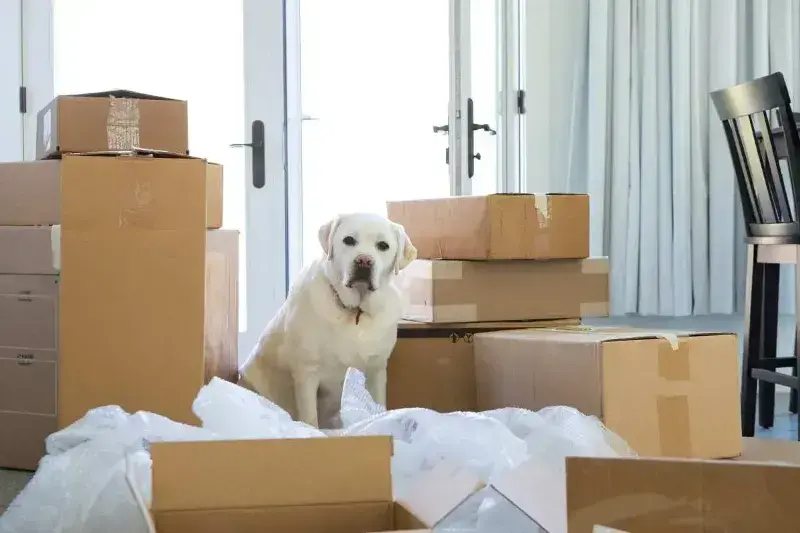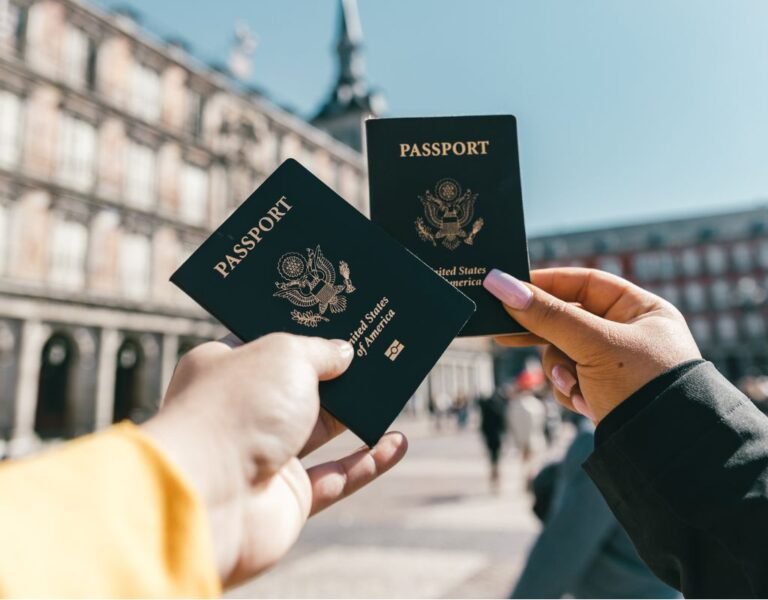Moving Belongings Overseas: An Expert Guide You Need
|
Moving belongings overseas can be an exciting, yet daunting task. Whether you are relocating for work, education, or personal reasons, it is essential to plan your international move meticulously to ensure a smooth and hassle-free transition.

The process of moving abroad involves various intricate steps, from organizing logistics to navigating customs regulations and so much more! So tick off the essentials of moving your belongings overseas, while also incorporating valuable insights and tips to make relocating a less intimidating task.
Importance of Planning for an International Move
Embarking on an international move requires careful planning and preparation. If you neglect to plan beforehand, be ready to face inevitable delays, additional costs, and unnecessary stress. Investing time in organizing your move in advance will alleviate many potential challenges and make sure that you seamlessly transition into your new life. We began to prepare for our international move approximately six months before we left our home in California.
The complexity of cross-border logistics is one of the most crucial topics to consider and research before planning your international move. Moving belongings overseas involves proper coordination, transportation, customs procedures, and adhering to specific regulations of your destination country.
Planning in advance allows you to review your specific needs and requirements for a complete relocation. Whether you are moving with family, pets, or fragile items, preparing early on enables you to make the necessary arrangements to ensure their safety and well-being throughout the journey. Not only that, you have the opportunity to declutter and determine which belongings are essential to take with you. This not only helps with the stress of a move but it helps considerably with shipping expenses.
Overview of the Guide
Moving belongings overseas can be a frustrating endeavor without proper planning and preparation. In this comprehensive guide, we will provide you with a step-by-step roadmap to help you navigate the intricacies of moving your belongings overseas. From researching your destination to understanding customs regulations, we will cover all the essential aspects to ensure a smooth and successful relocation.
By following this guide, you will be equipped with valuable insights and practical tips to make your international move a seamless and stress-free experience. While we encountered a few bumps in the road while moving a family of five and large dog overseas, we were lucky enough to avoid any major hiccups. Let’s get started on this exciting journey of moving your belongings overseas!
Researching Your Destination
When planning to uproot your life, it is crucial to thoroughly research the ins and outs of our country of destination. Understanding the cultural, legal, and logistical aspects of your new home will help you prepare for the transition and ensure a smoother relocation process. Take the following into account early on when conducting your research.
Visa and Residency Requirements
One of the first steps in moving to a new country is to familiarize yourself with the visa and residency requirements. Each country has its own set of rules and regulations regarding entry, duration of stay and work permits. Determine the type of visa you need and the necessary documentation required before you apply. Research the application process, any mandatory fees and the estimated waiting time for approval. It is advisable to consult with the embassy or consulate of your destination country to obtain accurate and updated information. This is always the first step we suggest in contemplating a move overseas. We have known several people who wanted to move to a desired location, only to find out that they did not meet the visa requirements. In our case we knew we wanted to move to Spain and so we read all we could about the different options available for visas in our new country. So be sure to cross this hurdle first and educate yourself thoroughly before moving forward!
Cultural Differences to be Aware of
Moving to a new country means embracing a new culture and way of life. Take the time to learn about the cultural differences and customs of your destination. Familiarize yourself with social norms, etiquette, and local traditions. Understanding the cultural nuances will help you navigate interactions with locals, adapt and avoid unintentional mix-ups. It is wise to learn the basics of the local language to facilitate clear communication within the community. We read all we could and encouraged our kids as well to take in as much information as they could about our new home. Not only does it show help with the transition but it allows you to significantly appreciate the history and culture in your new country.
Cost of Living and Housing Options
The cost of living can vary significantly from one country to another. Make sure you have a clear understanding of the expected expenses at your new home. Research the average costs of housing, transportation, groceries, healthcare, education, and other essential services. Compare these expenses to your current budget and your financial state to protect yourself from overspending. In some cases the location you dream of moving to might be more expensive than you anticipated, so do your due diligence and understand the average overhead in the country you are moving to in order to make sure it aligns with your finances.
Rent can easily eat up a chunk of your income. Explore reasonable housing options in your destination country. There are many websites that can give you an idea of the rental market, property prices and popular neighborhoods. Set priority filters when searching for housing such as access to daily amenities, access to public transportation and how close you can be to your workplace or school. The more you know about your new home, the easier it will be to adapt.
Planning Your Move
Now that you have conducted your initial research, let’s start planning the logistics of your move overseas. This stage involves making important decisions regarding the transportation of your belongings, packing efficiently, and ensuring the safety of your possessions.
Moving Company or Dare to DIY

One of the first decisions you’ll need to make is whether to hire a professional moving company or handle the move yourself. Hiring a reputable moving company that specializes in international relocations can offer numerous advantages. They are experts who have the experience to navigate the complexities of customs regulations, arrange transportation and so on. Research different moving companies and obtain multiple quotes to compare prices and to differentiate services offered and what company might work best for you.
On the other hand, if you prefer a more hands-on approach and have the time and resources to spare, you might consider a DIY move. This option requires careful planning and organization, from arranging transportation to packing and handling and handling customs procedures yourself. DIY moves can be very cost-effective but require significant effort and research to ensure a successful relocation. In one instance when we moved abroad we managed much of the research and packing, but hired someone to help us with the customs which felt a bit more daunting. This worked out great because there was cost savings, but also support with the complicated red tape!
procedures yourself. DIY moves can be very cost-effective but require significant effort and research to ensure a successful relocation. In one instance when we moved abroad we managed much of the research and packing, but hired someone to help us with the customs which felt a bit more daunting. This worked out great because there was cost savings, but also support with the complicated red tape!
Packing Tips and Materials to Use

Efficient packing is crucial to protect your belongings during an international move. Begin by decluttering and sorting your items, separating what you want to take, sell, donate, or dispose of. We wrote another blog post on exactly how we liquidated an entire household that has a lot of additional helpful information on how to tackle this process. Additionally, invest in sturdy packing materials such as strong boxes, bubble wrap, packing paper and of course lots and lots of tape. Make sure to pack fragile items like your dishes and glassware in specialized containers that make the process much more efficient.
Use a label maker to tag each box clearly so that you know what goes where when you eventually unpack. Take inventory of your items to keep track of everything. This will also come in handy when filling out customs declaration forms.
Shipping Options and Insurance
When it comes to shipping your belongings overseas, various options are available depending on your budget, time frame, and the volume of items you need to transport. Common shipping methods include air freight, sea freight and land transportation. Air freight is the fastest but typically the most expensive option. Sea freight is more affordable for larger shipments but takes longer. Land transportation can be a viable choice if you are moving to a neighboring country or a region with accessible road connections.
Regardless of the shipping method you choose, it is crucial to consider insurance coverage for your belongings. Accidents, loss, or damage can occur during transit and having insurance provides peace of mind. Trust me you’ll need it! Consult with your moving company or insurance providers to understand the coverage options available and choose a policy that best suits you.
Preparing for Customs Clearance
Navigating through the customs clearance procedure is the least desirable task within the whole moving process. Customs regulations vary from country to country and understanding the requirements and procedures will help ensure a smooth passage for your belongings.
Documents Needed for Customs Clearance:
Gather all the necessary documentation for customs clearance in advance. The specific documents required may vary depending on your destination country, but common items include:
- Passport: Ensure that your passport is valid and will not expire soon. Some countries may require a passport with a certain amount of validity remaining.
- Visa and Residency Permit: Provide the relevant documents proving your legal status in the destination country.
- Inventory List: Prepare a detailed inventory of the items you are bringing with you. This list should include descriptions, quantities, and estimated values of each item. It may be required for customs declaration purposes.
- Bill of Lading or Airway Bill: These documents are provided by the shipping company and serve as proof of shipment and ownership of the goods.
- Customs Forms: Familiarize yourself with the customs forms required by your destination country. These forms may include the Import Declaration Form, Declaration of Value, and any specific customs-related paperwork.
Restricted and Prohibited Items
It is crucial to be aware of any restricted or prohibited items that are not allowed to be imported into your destination country. These items can vary widely, ranging from certain foods, plants, and agricultural products to firearms, drugs, and hazardous materials. Keep yourself well versed on the specific regulations and restrictions imposed by the customs authorities of your new country to avoid potential issues during customs clearance.
Fees and Taxes to Be Aware Of
Moving anything above a certain weight or dimensions overseas may incur certain fees and taxes that need to be considered in your budgeting. These fees can include customs duties, import taxes, handling charges, and administrative fees. Some countries may offer exemptions or reduced rates for personal effects and used household items.
By ensuring you have all the necessary documents for customs clearance, understanding restricted and prohibited items and being aware of the fees and taxes associated with importing your belongings, navigating through customs should be successfully stress-free.
Arrival and Settling In
If you have arrived at this part of the journey,, then congratulations are in order, you have successfully moved your belongings overseas! Now it’s time to focus on settling into your new home and adapting to the new environment.
Finding Housing and Setting Up Utilities
If you haven’t secured accommodation prior to your move, start your search as soon as possible. Consider your budget, preferred location, and housing needs. Utilize online real estate platforms, local rental agencies, and networking opportunities to explore available options. Meet with realtors and arrange house tours if you have the time and patience to do so.
Once you have found your new home, it’s time to set up utilities such as electricity, water, gas, and internet services. Usually your landlord will help you set these things up but be sure you weigh out your alternative cheaper solutions if any.
Registering with Local Authorities
Depending on the regulations of your destination country, you may be required to register with the local authorities upon arrival. This process helps establish your legal status, facilitates access to government services, and ensures compliance with local regulations. Research the specific registration requirements and deadlines applicable to your situation.
Registering your residency, obtaining a local identification card, or enrolling in healthcare or social security systems would be first things on the list of things to do. Visit the local government offices or online portals to complete the necessary paperwork and follow the prescribed procedures to ease into your new life. In our case these steps took months, but slowly things begin to get checked off the list and your to-do list grows shorter and shorter.
Adjusting to a New Environment
Moving to a new country usually involves adjusting to a whole different culture, language, and way of life. Embrace this opportunity to explore and learn about your new surroundings. Engage with the local community, join social groups or clubs, and participate in cultural events. Immersing yourself in the local customs, traditions, and cuisine to seamlessly integrate into the local community. We have written several posts that go into much more detail about how our family of five integrated into a new community.
Additionally, be patient with yourself as you adapt to the new environment. Moving to a new country can be challenging at times, and it’s normal to experience a range of emotions. Give yourself time to settle in, establish routines, and build a support network. Stay connected with family and friends back home, while also making an effort to forgenew friendships and connections in your new community. The first year in our new country was full of all kinds of challenges and obstacles, but it was also incredibly rewarding and exciting! Be nimble, keep your sense of humor and things will slowly fall into place.
Adjusting to a new environment is a process that takes time. Be open-minded, embrace the changes, and approach your new adventure with a positive mindset. Soon, you will find yourself feeling more at home and enjoying the enriching experience of living in a different country.
Conclusion
Moving belongings overseas is a significant endeavor that requires careful planning, research, and preparation. Each step we jotted down plays a crucial role in ensuring a smooth and successful transition. Embracing these opportunities and challenges that come before, during, and after moving to a different country. Properly following this guideline will have you be well-equipped to navigate the complexities of moving belongings overseas and embark on a successful new chapter in your life.
Recap of the Guide
Moving belongings overseas is a journey that requires careful planning, organization, and adaptability. By following the steps outlined in this guide, you can navigate the complexities of an international move more confidently and ensure a smoother transition for both you and your belongings.
Additional Resources for Moving Overseas
To further support your international move, consider seeking out additional resources. Online forums and expat communities can provide valuable insights and firsthand experiences. I have gathered so much invaluable information from expat forums and use them daily to find support on everything from housing and schools to doctors and business resources. Books, podcasts, and blogs dedicated to international relocations offer practical tips and advice as well. Consulting with professionals, such as immigration experts and international moving companies, can provide tailored guidance for your specific needs. Additionally many locations have companies that are entirely dedicated to helping people settle into their new countries. We have used these companies for things like car registration, utility setup and visa documentation to name just a few. Their prices are normally reasonably and they provide an invaluable service
Resources for Additional Information: For more in-depth information on specific aspects of moving overseas, here are some resources to explore:
- Official government websites: Visit the official websites of your destination country’s embassy, consulate, or immigration department for up-to-date information on visa requirements, customs regulations, and other essential details.
- International moving companies: Reputable moving companies specializing in international relocations can offer guidance, assistance, and expertise throughout the entire moving process.
- Online research: Conduct online research to find country-specific guides, expat forums, and reputable websites that provide comprehensive information on moving abroad.
- Expat networks and communities: Joining expat communities, both online and offline, can provide a wealth of information and support from individuals who have already experienced an international move.
Moving belongings overseas is an exciting and transformative experience. By utilizing the information and resources provided in this comprehensive guide, you can embark on your international move with confidence, knowing that you are well-prepared to face the challenges and embrace the opportunities that await you in your new home.
Best of luck with your international move, and may it be a successful and fulfilling chapter in your life!
Frequently Asked Questions
What should I expect during the customs clearance process?
During the customs clearance process, you should expect to submit all necessary documentation, undergo customs inspection, pay any duties and taxes, and ultimately have your goods either released or subjected to further inspection before being cleared and delivered.
Are there any items that cannot be shipped overseas?
Yes, there are various items that are typically prohibited or restricted from being shipped overseas, such as hazardous materials, weapons, illegal drugs, counterfeit goods, and certain agricultural products. Each country has its own specific list of prohibited and restricted items, so it’s important to consult the regulations of the destination country before shipping.
Should I purchase travel insurance?
Purchasing travel insurance is generally recommended as you never know what lies ahead of your move. It provides coverage for unexpected events such as trip cancellations, medical emergencies, lost luggage, and other travel-related risks. We highly recommend doing it!
How can I save money when moving my belongings overseas?
To save money when moving your belongings overseas, consider decluttering and getting rid of unnecessary items, comparing quotes from different moving companies to find the best price, and packing your belongings yourself to avoid additional packing fees.

Get Started Today!
How to Move Abroad
A Workbook to help you make the right choices
Use our easy to follow roadmap to help you find the perfect location to start your new life.
Hello and Welcome!

We started our family travel blog in hopes of supporting other families move abroad and travel the world. Through straightforward, sincere and supportive information we hope to provide a reliable guide for those moving overseas with a family and traveling the globe.





